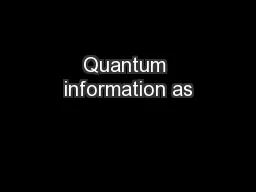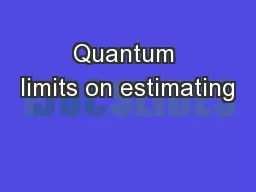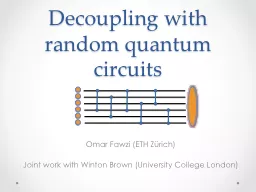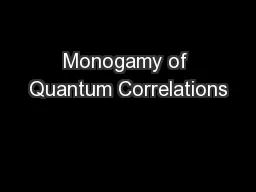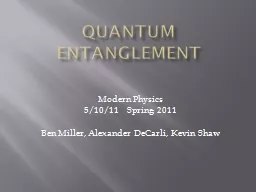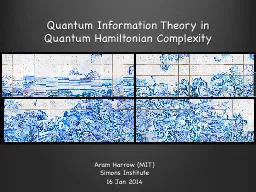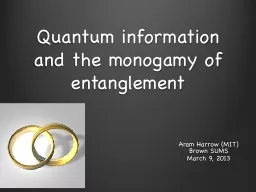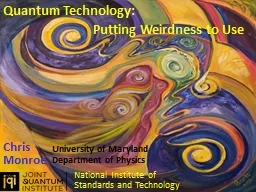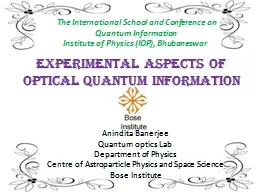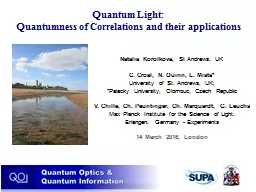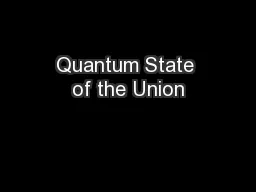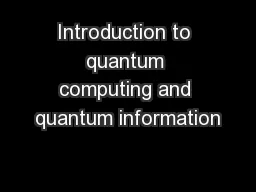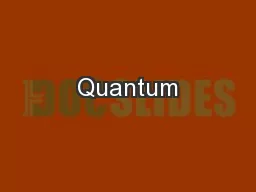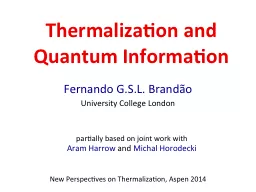PPT-Quantum information as
Author : celsa-spraggs | Published Date : 2016-05-29
highdimensional geometry Patrick Hayden McGill University Perspectives in High Dimensions Cleveland August 2010 Motivation 1m 1nm Outline The onetime pad classical
Presentation Embed Code
Download Presentation
Download Presentation The PPT/PDF document "Quantum information as" is the property of its rightful owner. Permission is granted to download and print the materials on this website for personal, non-commercial use only, and to display it on your personal computer provided you do not modify the materials and that you retain all copyright notices contained in the materials. By downloading content from our website, you accept the terms of this agreement.
Quantum information as: Transcript
Download Rules Of Document
"Quantum information as"The content belongs to its owner. You may download and print it for personal use, without modification, and keep all copyright notices. By downloading, you agree to these terms.
Related Documents

